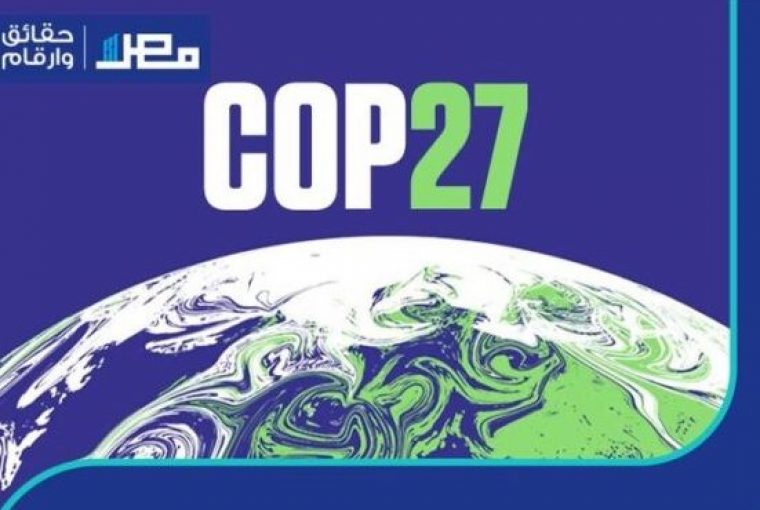The United Nations Climate Change Conference of the Parties, also known as COP27, will be held in Sharm El-Sheikh, Egypt in November 2022. This will be a crucial summit for vulnerable countries who are feeling the effects of climate change more and more each day. It was initially planned to be held in late 2021 in Glasgow, Scotland, but due to the postponement of COP26, it was moved to Egypt.
The conference will be important for a number of reasons:
Firstly, it will be a chance to build on the momentum from COP26 and ensure that countries deliver on their commitments to tackle climate change. Secondly, it will be an opportunity to focus on the needs of vulnerable countries who are disproportionately affected by climate change. And finally, it will be a time to discuss how the international community can work together to finance the transition to a low-carbon future.
COP26
COP26 was an important step forward in the fight against climate change, but it did not deliver enough results to meet the needs of vulnerable countries. at COP27, delegates will need to build on the progress made at COP26 and come up with concrete solutions that will help those countries most affected by climate change.
Results of COP26
COP26 was considered a success by many, as it resulted in countries agreeing to more ambitious targets for reducing greenhouse gas emissions. However, there were a number of key issues that were not addressed at the summit, which will need to be addressed at COP27.
Commitments of Developed Countries
One of the most important issues is finance. At COP26, developed countries committed to providing $100 billion a year by 2030 to help developing countries tackle climate change. However, this figure is still far short of what is needed. According to the United Nations Framework Convention on Climate Change (UNFCCC), developing countries need $300-500 billion a year by 2030 just to adapt to the effects of climate change.
Irreversible Climate Change
Another key issue is loss and damage. This refers to the impacts of climate change that are irreversible and cannot be adapted to. At COP26, developed countries agreed to establish a task force to look into the issue of loss and damage, but no concrete solutions were proposed.
Finally, the issue of climate justice was also not adequately addressed at COP26. This is the principle that those who have contributed the least to climate change should not be the ones who suffer the most from its impacts.
COP27 Expectations

At COP27, delegates will need to address these issues head-on in order to make progress on tackling climate change. Only by doing so can we hope to achieve the goals set out in the Paris Agreement and ensure a sustainable future for all. COP27 will be an important opportunity for countries to review their progress on meeting their NDCs and set new, more ambitious targets for the future.
It will also be a chance to focus on the needs of those most vulnerable to climate change and come up with concrete solutions to help them adapt and cope with its impacts. COP27 will be an opportunity for the international community to come together and agree on a plan to finance the transition to a low-carbon future.
Paris Agreement
The Paris Agreement is a global agreement that was signed by nearly 200 countries in 2015. Its goal is to keep the global temperature rise this century well below 2 degrees Celsius and to pursue efforts to limit the temperature increase even further to 1.5 degrees Celsius.
In order to achieve this, countries have committed to reducing their greenhouse gas emissions and making “nationally determined contributions” (NDCs) to the climate change effort. However, many countries are not on track to meet their NDCs and will need to increase their ambition in order to meet the goals of the Paris Agreement.
Nationally Determined Contributions
Nationally determined contributions are the commitments that countries make to reduce their greenhouse gas emissions and adapt to the effects of climate change. They are “nationally determined” because each country decides what it can do, based on its own capabilities and resources.
So far, nearly 180 countries have submitted their NDCs, which cover 99% of global emissions. However, these NDCs are not enough to meet the goals of the Paris Agreement and will need to be made more ambitious in order to achieve them.
Net Zero
Net zero refers to a situation where the amount of greenhouse gases emitted by a country is equal to the amount that is removed from the atmosphere. This can be achieved through a combination of reducing emissions and increasing carbon sinks.
Achieving net zero by 2050 is necessary in order to meet the goals of the Paris Agreement. In order to do this, developed countries will need to make deep cuts to their emissions and move to clean energy sources.
Greenhouse Gas Emissions
Greenhouse gas emissions are the main cause of climate change. They come from a variety of sources, including power plants, factories, cars, and airplanes. Greenhouse gas emissions trap heat in the atmosphere and cause the Earth’s temperature to rise.
Climate Change

Climate change is the long-term alteration of temperature and typical weather patterns in a place. Climate change could refer to a particular location or the planet as a whole. Climate change has a range of impacts, including on weather patterns, sea level rise, and melting icecaps.
Impacts of Climate Change
Climate change has a range of impacts, both on humans and on the natural world. These include more extreme weather events such as heatwaves and floods, sea level rise, and changes to ecosystems. Climate change can also cause displacement of people, as well as loss of livelihoods and homes.
Kyoto Protocol
The Kyoto Protocol is a global agreement that was signed in 1997 and came into force in 2005. It commits countries to reducing their greenhouse gas emissions. The Protocol was the first international agreement to set binding targets for reducing emissions. However, the Protocol only applies to developed countries and does not include any commitments from developing countries. This means that it does not cover the majority of global emissions.

